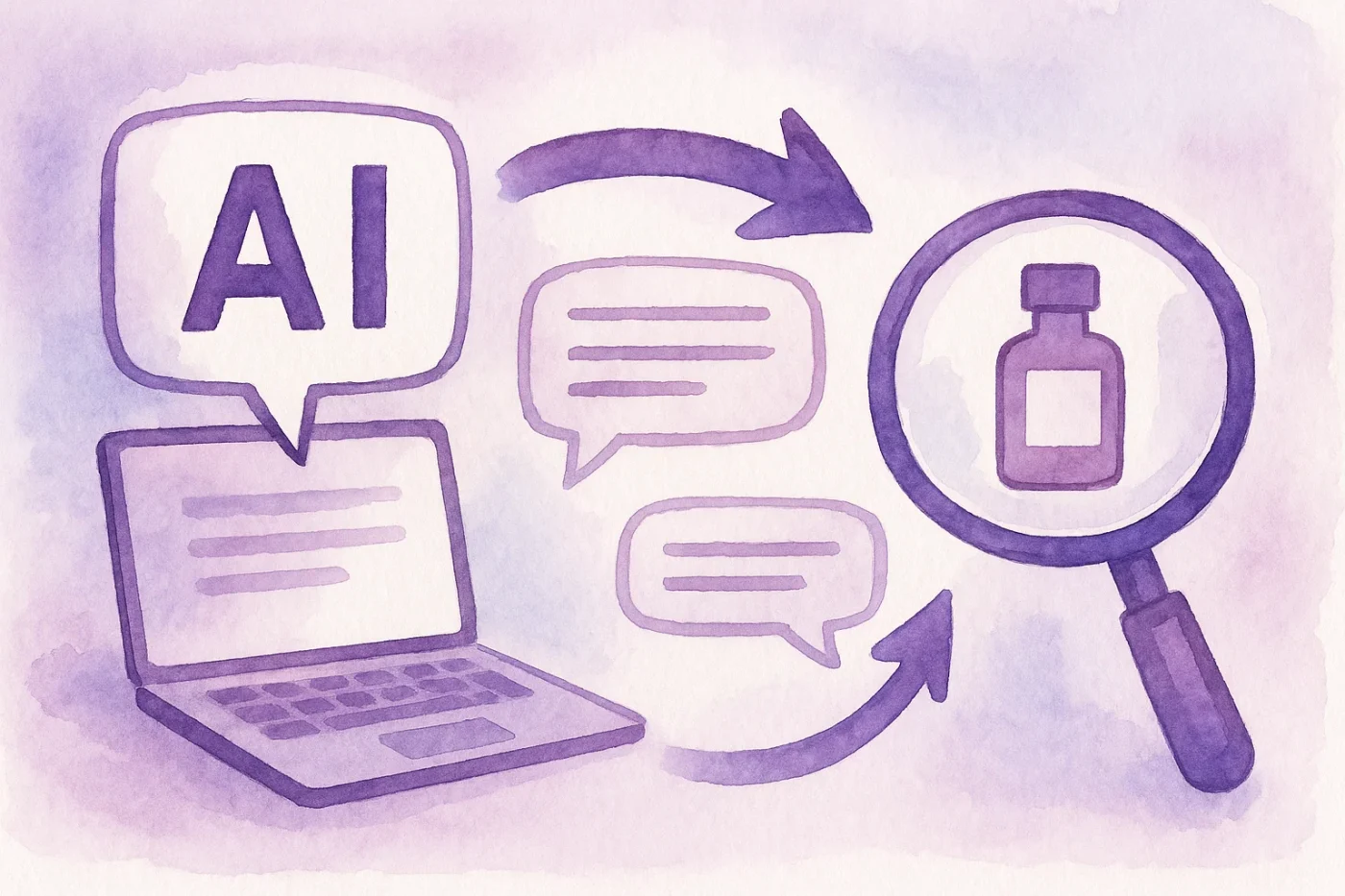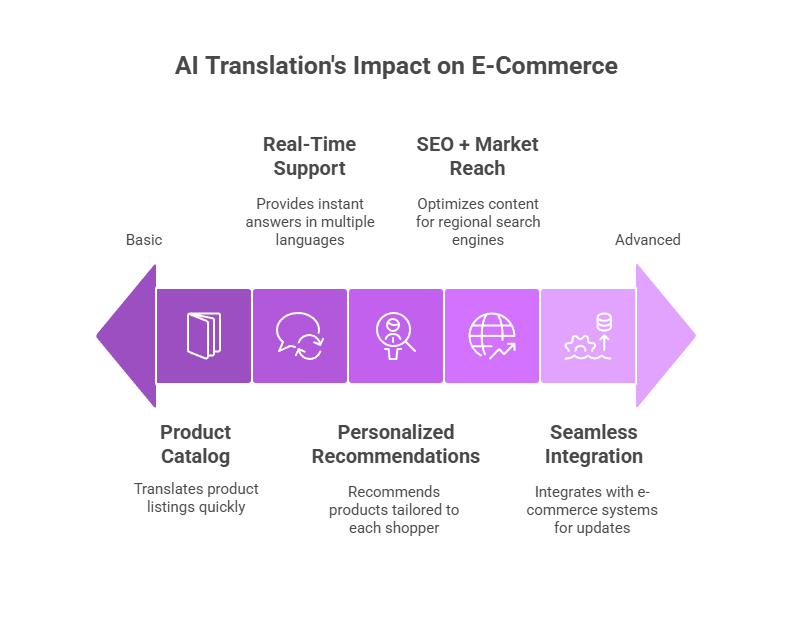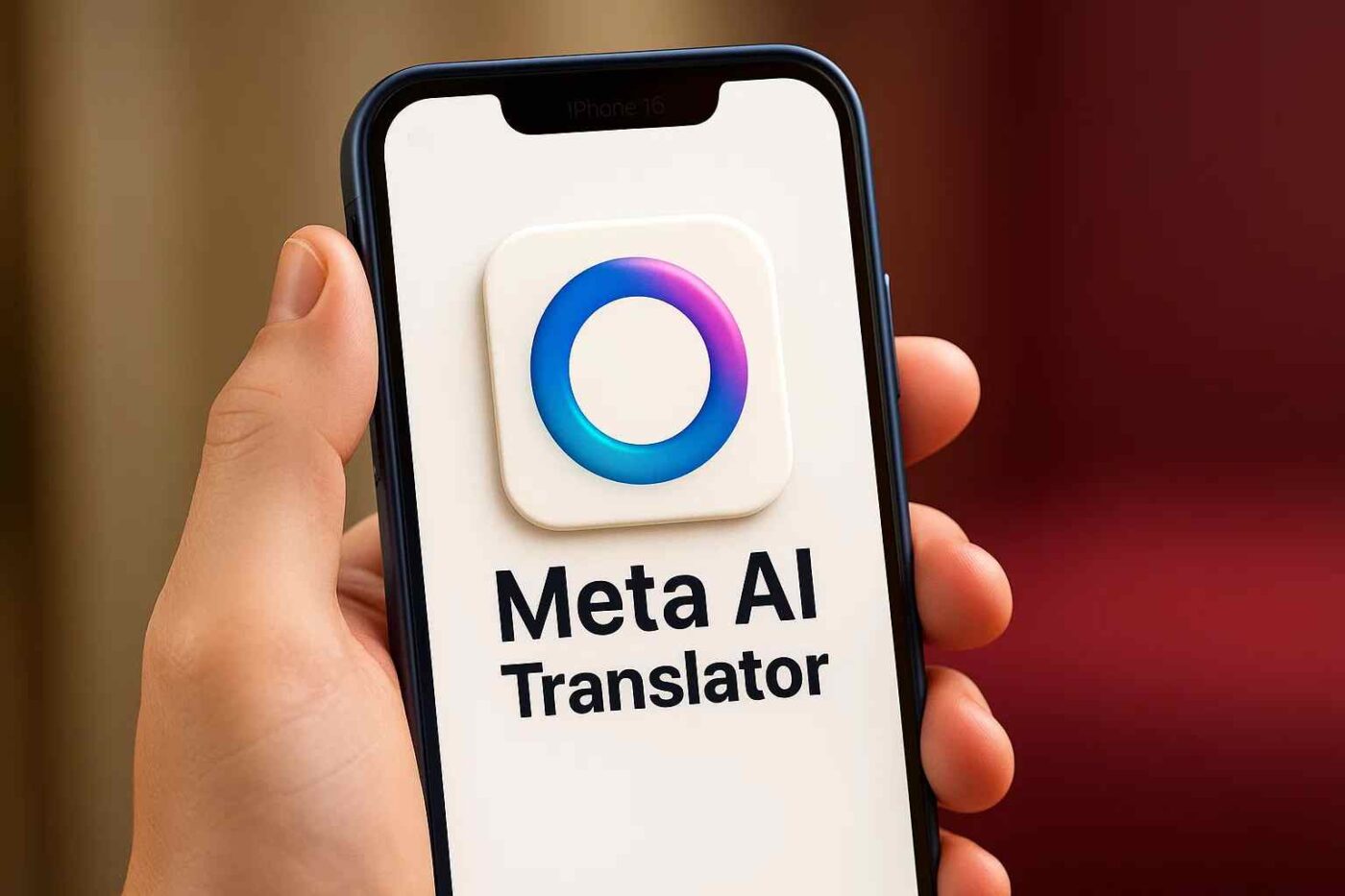How To Use AI Translations to Improve Product Discovery Now

In today’s borderless e-commerce ecosystem, your biggest growth opportunity might be just one translation away, and AI translations are your best bet.
As online shopping continues to globalize, the ability to speak your customer’s language, literally, is no longer a nice-to-have; it’s a growth imperative.
Here’s the stat that should stop every brand in its tracks: 75% of shoppers are more likely to buy when product information is presented in their native language.
That means three out of four potential customers might scroll past your best-selling item, simply because they can’t understand the description.
The good news? AI translations have changed the game. To the point where AI can replace some translators…
They offer more than just speed and affordability, they’re a powerful tool for enhancing product discovery, deepening user engagement, and increasing conversion rates across international markets. And they’re ready to deploy now.
Why AI Translations Are Essential for Product Discovery
No matter how optimized your product is, it doesn’t exist to the customer who can’t read it.
Language is the first filter in global product discovery.
If a user can’t understand your product listing, it may as well not exist.
That’s where AI-powered translations come in. By dynamically converting your catalog into multiple languages with accuracy and nuance, AI removes the friction between discovery and decision-making.
Core Insight: Remove Barriers, Unlock Markets
When language isn’t a barrier, your entire catalog becomes instantly searchable and accessible to a global audience.
In fact, that 75% shopper preference for native-language content isn’t just a number, it’s a direct line to improved conversion rates, better on-site engagement, and stronger brand trust.
And unlike traditional translation methods, AI does this at scale.
Thousands of product descriptions, specs, reviews, and banners can be translated in minutes. That means faster market entry, greater reach, and discoverability that doesn’t rely on your customer knowing your language.
Bottom line: The easier it is for someone to understand your product, the more likely they are to find it, trust it, and buy it.
Practical Ways AI Translations Improve Discovery

AI translations aren’t just a backend upgrade, they directly influence how (and whether) customers discover your products. Here’s how they plug into every stage of the discovery journey:
Product Catalog Localization
Want to speak your customer’s language?
Start with your catalog. AI translation tools can localize thousands of product listings, descriptions, specs, reviews, banners, in minutes. That means no more bottlenecks between launch and localization.
What sets AI apart? It’s not just translating words, it understands context. Especially the good AI translation tools made for E-Commerce scale.
Whether it’s a luxury skincare product or a tech gadget, AI adapts the tone, terminology, and technical details to match the local market’s expectations.
Real-Time Multilingual Support
Discovery doesn’t stop at the product page.
Customers often have questions before they buy, and if they can’t get answers in their language, they bounce.
With AI-driven chatbots, FAQs, and help centers available in multiple languages, shoppers stay engaged, confident, and more likely to convert.
Support becomes a seamless part of the experience, without language barriers pushing people out of the funnel.
Personalized, Localized Recommendations
AI doesn’t just translate, it personalizes. Using real-time behavior data, AI can recommend products tailored to each shopper and present them in their own language.
The result?
More relevant suggestions, higher click-through rates (CTR), and a shopping journey that feels intuitive no matter where the user is browsing from.
SEO + Market Reach
Translation isn’t enough, you also need to be found.
AI tools optimize product titles, descriptions, and metadata using localized keywords, ensuring that your content is indexed and ranked by regional search engines.
Even better, AI can adapt visuals and messaging for cultural relevance, increasing resonance in every market.
It’s translation with a marketing edge.
Seamless Integration
Worried about workflow chaos? Don’t be.
Today’s top AI translation platforms integrate directly with e-commerce and product information management (PIM) systems.
That means your multilingual content updates automatically as your catalog evolves, no duplication, no lag.
And with continuous learning built in, the more the system works, the better it gets at preserving nuance and tone.
From Cost Savings to Sales Growth, Real-World Results
A mid-size fashion e-commerce brand deployed AI translation across its product catalog and customer touchpoints. The results were eye-opening:
- 70% reduction in translation costs
- 45% increase in international sales
- 30% jump in customer satisfaction scores
Faster time to market, deeper engagement, and lower overhead, all by switching to AI-powered localization.
Toolbox Highlights: What to Use
Looking to follow suit? Start with these proven platforms:
- Glopal: Global selling suite with smart translation and tax compliance
- Trados: Enterprise-grade CAT tools and TM integration
- DeepL: High-quality neural machine translation for nuanced content
- Lokalise: Agile-friendly localization platform with rich automation
Pro tip: Prioritize tools that offer human-in-the-loop review, robust security, and plug-and-play integration with your existing stack.
If you’re looking for an AI Translations software dedicated to serving E-Commerce clients, here’s your AI translation tool.
Getting Started Checklist
Here’s your playbook to launch multilingual discovery with AI:
✅ Audit your product catalog: What’s untranslated? What markets matter most?
✅ Integrate a reliable AI translation platform that fits your tech stack
✅ Localize product listings, support content, and critical UX copy
✅ Measure key metrics, international traffic, bounce rates, conversion
✅ Iterate: Use feedback to improve and expand your localization footprint
Conclusion: Speak Their Language, Win Their Business
AI translations are more than a backend feature, they’re a strategic growth lever.
By eliminating language barriers, you unlock faster international expansion, dramatically improve product discovery, and build instant trust with shoppers around the world.
The result? Faster growth. Better engagement. Broader reach.
E-commerce is global. Your catalog should be too.
Start localizing now, and position your brand to lead in the multilingual marketplace of today (and tomorrow).
Frequently Asked Questions about AI Translations
Why are AI translations better than manual ones for product listings?
→ Speed, scale, and cost. AI can translate thousands of listings instantly while preserving tone and meaning, something that’s difficult and expensive with manual translation alone.
How do AI translations affect SEO?
→ AI tools translate metadata and product content using localized keywords, improving organic search visibility in every regional market you enter.
What platforms support e-commerce AI translations?
→ The best option for E-Commerce stores, especially the ones scaling in Europe with hundreds, thousands and even tens of thousands of SKUs, is Ovesio
Is human review still needed?
→ Yes, especially for high-stakes or nuanced content. Human-in-the-loop review ensures translations maintain accuracy, tone, and brand consistency.
How do I measure the success of AI translations?
→ Track metrics like:
- International conversion rates
- Bounce rates on localized pages
- Localized CTR on recommendations
- Growth in organic traffic from translated content





